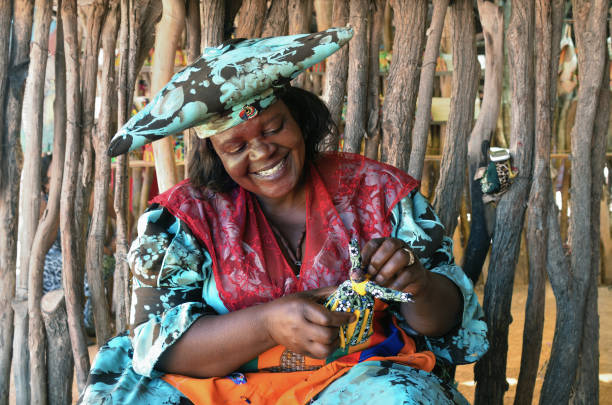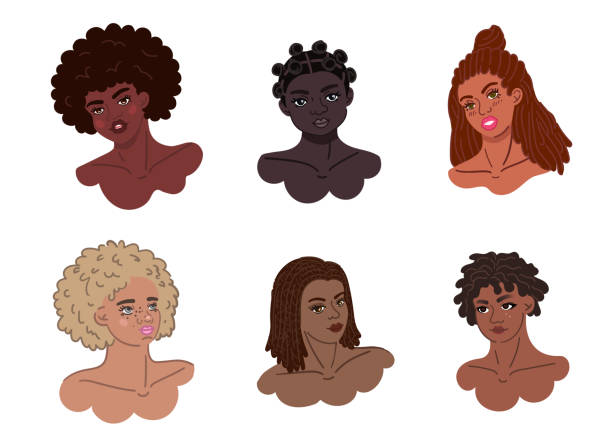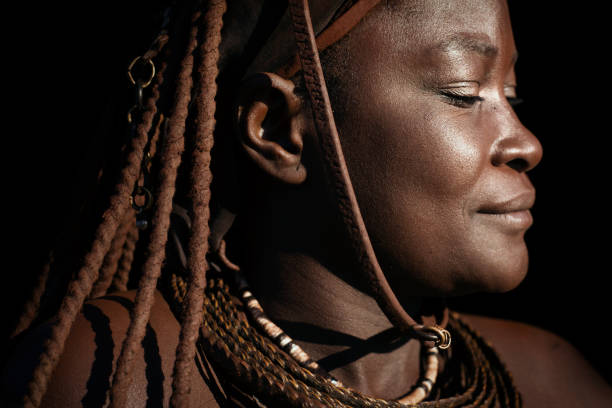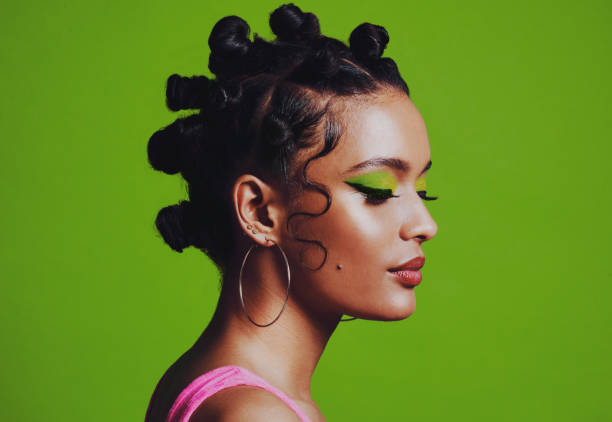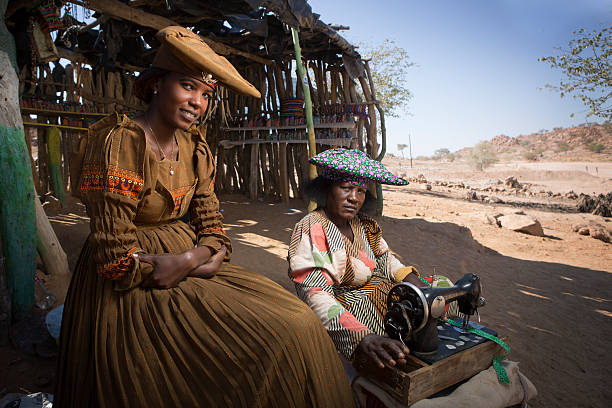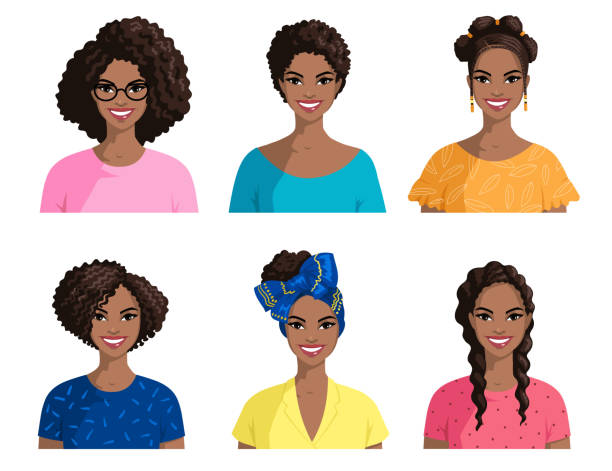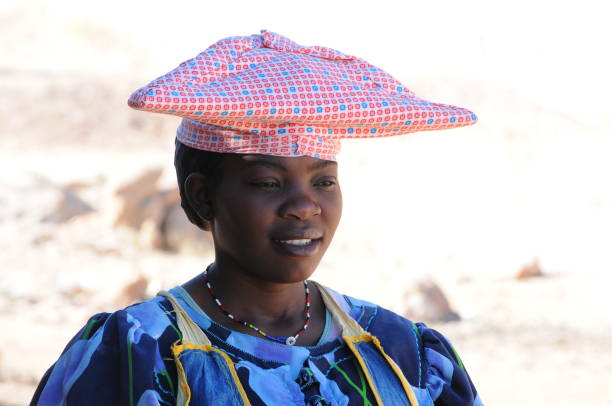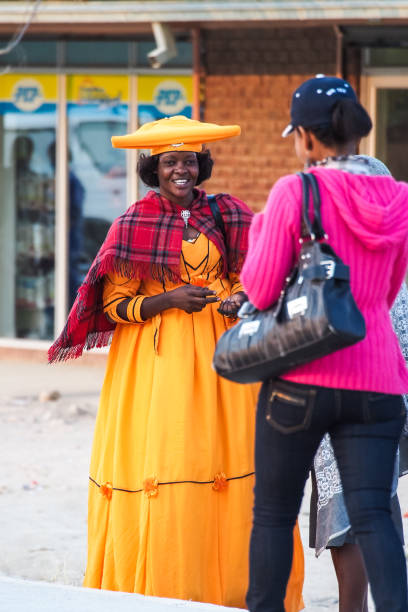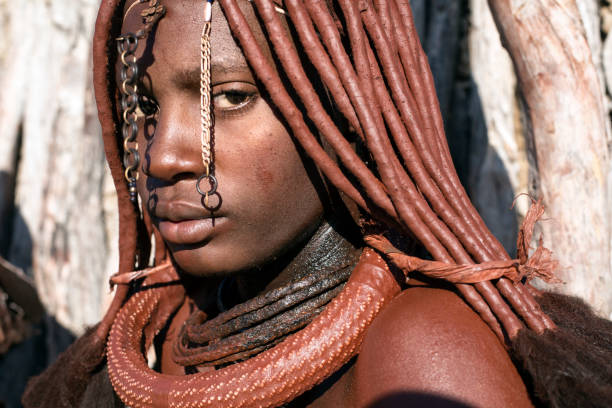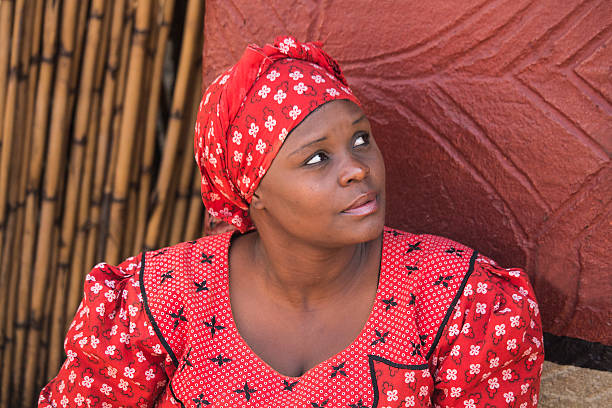
Bantu African Lady Pictures, Images and Stock Photos
Browse 300+ bantu african lady stock photos and images available, or start a new search to explore more stock photos and images.

Shot of a woman posing against a green background with her bantu knots
Shot of a woman posing against a green background with her bantu knots
Shot of a woman posing against a green background with her bantu knots
KAOKOLAND, NAMIBIA - FEB 1, 2016: Smiling Herero Woman in traditional clothes makes a doll. The Herero belonging to the Bantu group, with about 240,000 members alive today.
Black hair culture - african-american girls isolated heads. Black women portraits with braids, afros, locs and hair knots. Curly african ladies with authentic hairstyles, vector illustrations
Shot of a woman posing against a green background with her bantu knots
EPUPA, NAMIBIA - 12TH MAY 2016 - A Himba woman poses for a photo during a village visit. The Himba villages around Epupa welcome visitors in exchange for food and the chance to sell their crafts.
African native people: San people (Bushmen), man and woman (top); Herero chiefs (bottom). Wood engravings, publishe in 1897.
Shot of a woman posing against a green background with her bantu knots
Candomblé is an Afro-Brazilian religious tradition, practiced mainly in Brazil. Candomblé originated in Salvador, Bahia at the beginning of the 19th century, when the first temple was founded. It developed in a creolization of traditional Yoruba, Fon, and Bantu beliefs brought from West and Central Africa by enslaved captives in the Portuguese Empire.
Candomblé is an Afro-Brazilian religious tradition, practiced mainly in Brazil. Candomblé originated in Salvador, Bahia at the beginning of the 19th century, when the first temple was founded. It developed in a creolization of traditional Yoruba, Fon, and Bantu beliefs brought from West and Central Africa by enslaved captives in the Portuguese Empire.
Shot of a woman posing against a green background with her bantu knots
Usakos, Namibia. - August 7, 2015: Herero women proudly displays her traditional Herero outfit. The Herero women adopted this way of dressing after being German colonials settled in South West Africa. The herringbone hats are said to be the Herero's own adaptation as they wanted a hat thet represented their cattle which are a large part of their culture.
Candomblé is an Afro-Brazilian religious tradition, practiced mainly in Brazil. Candomblé originated in Salvador, Bahia at the beginning of the 19th century, when the first temple was founded. It developed in a creolization of traditional Yoruba, Fon, and Bantu beliefs brought from West and Central Africa by enslaved captives in the Portuguese Empire.
Portraits of smiling African women. A group of dark-skinned women with various afro hairstyles. Beautiful female portraits isolated on white. Great for avatars. Cartoon style, vector.
Natal, South Africa, 1975. Bantu villagers at a tribal dance for tourists in Natal.
An older Caucasian man and an African woman relax together on a beach.
Portrait of a pretty Bantu lady taken on a hot Summer's day by the sea.
Usakos, Namibia - August, 24, 2014: portrait of Herero women in the street of Usakos, Namibia
Opuwo, Namibia - Jul 06, 2019: Herero Woman in traditional clothes in Opuwo. Namibia. The Herero belonging to the Bantu group, with about 240,000 members alive today.
EPUPA, NAMIBIA - 12TH MAY 2016 - A Himba woman poses for a photo during a village visit. The Himba villages around Epupa welcome visitors in exchange for food and the chance to sell their crafts.
Lesedi Cultural Village, Gauteng, South Africa - July 04, 2015. Smiling African Zulu woman Bantu nation weaves straw carpet.
Usakos, Namibia. - August 7, 2015: Herero woman proudly displays her traditional Herero outfit. The Herero women adopted this way of dressing after being German colonials settled in South West Africa. The herringbone hats are said to be the Herero's own adaptation as they wanted a hat thet represented their cattle which are a large part of their culture.
Opuwo, Namibia - Jul 06, 2019: Herero Woman in traditional clothes in Opuwo. Namibia. The Herero belonging to the Bantu group, with about 240,000 members alive today.
Johannesburg, South Africa - July 04, 2015: woman Bantu nation in handmade red dress and African hat next to her house.
African Bantu women or girls. Culture and history of Africa. Vintage antique black and white illustration. 19th century.
Beautiful mid aged African woman with headscarf covering studio portrait. She is holding a smart phone showing emotion of winning success
Vintage engraving of Bechuana women building a fence around their home. The Tswana (Bechuana) are a Bantu speaking Southern African people from Botswana. Ferdinand Hirts Geographische Bildertafeln,1886.
Twyfelfontein, Namibia - Jul 10, 2019: Herero Woman in traditional clothes in Twyfelfontein. Namibia. The Herero belonging to the Bantu group, with about 240,000 members alive today.
Opuwo, Namibia - Jul 06, 2019: Herero Woman in traditional clothes in Opuwo. Namibia. The Herero belonging to the Bantu group, with about 240,000 members alive today.
Opuwo, Namibia - Jul 06, 2019: Herero Woman in traditional clothes in Opuwo. Namibia. The Herero belonging to the Bantu group, with about 240,000 members alive today.
Opuwo, Namibia - Jul 06, 2019: Herero Woman in traditional clothes in Opuwo. Namibia. The Herero belonging to the Bantu group, with about 240,000 members alive today.
Opuwo, Namibia - Jul 07, 2019: Herero Women in traditional clothes in Opuwo. Namibia. The Herero belonging to the Bantu group, with about 240,000 members alive today.
Opuwo, Namibia - Jul 06, 2019: Herero Woman in traditional clothes in Opuwo. Namibia. The Herero belonging to the Bantu group, with about 240,000 members alive today.
herero woman wearing a Victorian style dress outdoors in a village in north Botswana
Usakos, Namibia - August, 24, 2014: portrait of Herero women in the street of Usakos, Namibia
herero woman wearing a Victorian style dress outdoors in a village in north Botswana
A Herero family during the German colonial period in Namibia. The Herero and Namaqua Genocide is thought to have been the first genocide of the 20th century. It took place between 1904 and 1907 in German South West Africa (today called Namibia), during the scramble for Africa. In total, from 24,000 up to 100,000 Herero and 10,000 Nama died. Halftone print after a photograph, published in 1899.
herero woman wearing a Victorian style dress outdoors in a village in north Botswana
Usakos, Namibia, - August 7, 2015: Herero women proudly displays her traditional Herero outfit. The Herero women adopted this way of dressing after being German colonials settled in South West Africa. The herringbone hats are said to be the Herero's own adaptation as they wanted a hat thet represented their cattle which are a large part of their culture.
Beautiful African woman studio portrait Earache
Cartoon Emoticons EPS10 File Format
Candomblé is an Afro-Brazilian religious tradition, practiced mainly in Brazil. Candomblé originated in Salvador, Bahia at the beginning of the 19th century, when the first temple was founded. It developed in a creolization of traditional Yoruba, Fon, and Bantu beliefs brought from West and Central Africa by enslaved captives in the Portuguese Empire.
Khoikhoi from Berseba (Namibia). Wood engraving after photographs, published in 1891.
African native people: A Xhosa from the Lake Ngami in Botswana (top left); Khoikhoi from Berseba, Namibia (top right); Damara people, chief and wife (bottom left); High officials from Madagascar (bottom right). Wood engravings after photographs, published in 1897.
KAOKOLAND, NAMIBIA - FEB 1, 2016: Unidentified Herero Woman with her daughter in traditional clothes near Opuwo. Namibia. The Herero belonging to the Bantu group, with about 240,000 members alive today.
Natal, South Africa, 1975. A group of young Zulu women in traditional costume.
Twyfelfontein, Namibia - Jul 10, 2019: Herero Woman in traditional clothes in Twyfelfontein. Namibia. The Herero belonging to the Bantu group, with about 240,000 members alive today.
African Native People: 1 - 2) Mpongwe people from Gabun; 3) Arab from Morocco; 4) Arab from the southern Tunisia; 5) Fellah; 6 - 7) Copts; 8) Koto from Niger; 9) Fang people; 10) Berber (Dachelaner); 11) Fur people; 12) Nubian; 13) Congolese people; 14) Zulu people; 15) Bagirmi boy; 16) Mangbetu (Monbuttu); 17) Zande people (Niam-Niam); 18) Madi people (Schuli); 19 - 20) Abyssinian people; 21 - 22) Khoikhoi (formerly derogatory named as Hottentots); 23) Batswana girl (Betschuan); 24) Aka people; 25 - 26) San people (Bushmen); 27) Sakalava people from Madagascar; 28) Swahili people from Zanzibar (Tanzania); 29 - 30) Somalis. Lithograph after a drawing by Gustav Mützel (German painter, 1839 - 1893), published in 1897.
Shot of a woman posing against a green background with her bantu knots
Shot of a woman posing against a green background with her bantu knots
Vintage engraving of a girl of the Manyema people. Manyema (Una-Ma-Nyema, eaters of flesh), a powerful and, in the past, warlike Bantu people in the southeast of the Congo basin and in the Kigoma region of Western Tanzania. Ferdinand Hirts Geographische Bildertafeln,1886.
Usakos, Namibia. - August 7, 2015: Herero woman proudly displays her traditional Herero outfit. The Herero women adopted this way of dressing after being German colonials settled in South West Africa. The herringbone hats are said to be the Herero's own adaptation as they wanted a hat thet represented their cattle which are a large part of their culture.
Lunda women and children. The Lunda (Balunda, Luunda, Ruund) are a Bantu ethnic group that originated in what is now the Democratic Republic of the Congo. Halftone print after a photograph, published in 1899.



